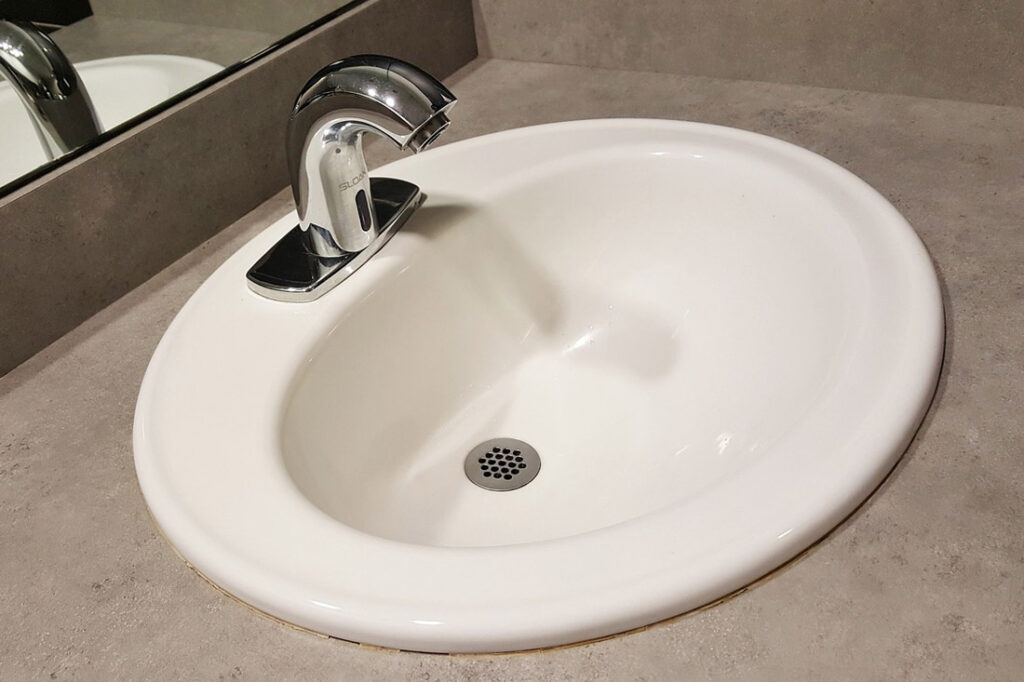Please note: This post is intended to educate cat parents with declawed cats but we do not support declawing cats. Still, it's a complex topic and if you want to learn more about both sides of the argument, I highly recommend this article from the BBC.
We know that cats are legendary for their ability to catch mice and their “very specific set of skills” are what helped form their close relationship with humans in the first place.
Humans were happy to have cats to manage their pest problems and cats were happy to have a reliable food source.
Things have certainly changed since those times and cats are now part of the family and often their only responsibility is to look cute! Cats have also had to get used to an entirely different level of domestication which means plenty of great additions like fancy cat furniture and litterboxes.
It's also brought about some less desirable things…like declawing.
But how much does declawing really impact a cat's ability to hunt and can a declawed cat still catch mice, rats, and other rodents?
Yes, a declawed cat can still catch mice by pinning down the mouse and quickly delivering a lethal bite. Still, declawed cats should never be counted on as a barn cat or even let outside. Even though they can still hunt, the lack of claws leaves declawed cats too vulnerable for outdoor living.
Let's take a closer look at how cats without claws cats pull off the hunt and everything else you need to know about the hunting skills of a declawed cat.
How Can A Cat Catch A Mouse Without Front Claws?
So we know that cats can still hunt rodents even without their claws but how is this actually possible?
To figure that out, let's look at how a cat would normally catch a mouse and see how having front claws help. Then, we can compare that to the technique used by cats without front claws to see the difference.
This isn't a perfect guide to how a cat hunts but it does give us a good overview of the process.
Step 1: Finding and Stalking Prey
Cats are what's called ambush predators and they choose stealth above all else when it comes to tracking prey. With 24 powerful whiskers that can detect subtle movements in air currents and the ability to hear ultrasonic sounds, cats are well equipped for tracking down their prey.
Once cats know where their prey is, they slowly approach until they're within pouncing distance.
You've likely seen just how slowly and quietly cats can stock their prey…even if that “prey” was your ankle!
Step 2: Capturing
After cats have closed the distance, it's time to pounce and this is when the real action starts. Cats will leap through the air onto their prey and the impact of landing on small animals like mice, rats, and other rodents can actually stun them.
Even though our cats are quite small, especially compared to other felines in the animal kingdom, in comparison to mice they're huge which means there's a lot of power beyond the pounce. Cats without claws will have no problem stunning their prey the same way that cats with claws would.
But after the stunning stage, that's where the lack of claws becomes a disadvantage.
Cats with claws are able to immediately transition to keeping their prey under control while declawed cats are stuck relying only on the grip of their paws which isn't going to be nearly as reliable.
This could decrease the success rate for some declawed cats but others will learn to make up for the lack of claws by quickly transitioning to the next step of the hunt.
Step 3: Killing Blow
Once the prey is captured and secure, it's time to deliver the killing blow.
However, as disturbing as it may sound many cats will decide to play with their prey before they ever deliver the finishing bite. Declawed cats will do the same thing but without front claws to securely lock their prey in place, they may be more likely to lose their prey while playing.
When cats are ready, or if they're particularly hungry, they'll deliver the killing blow. Similar to big cats like lions, our little house cats will often break the neck of their prey with a precise bite to the neck. Cats use their front claws to lock the prey in place so they can get in the proper position for the killing bite and this is another area where declawed cats will be at a disadvantage.
Still, when talking specifically about mice and other very small rodents there's not nearly as much precision required compared to other larger prey so declawed cats are still very much able to pull this off.
Step 4: Consumption…or Delivery
At this point, cats will either eat their prey, leave it where they killed it or decide to make a special delivery and bring you their dead prey as a gift.
While that last option isn't exactly everyone's favorite, many cats just can't seem to resist showing off their work.
So What's The Difference Between Claws or No Claws?
The biggest difference between the hunting process of a declawed cat and a cat with claws comes at the capture stage.
Without claws, a cat is more likely to lose their prey at this stage which means an unsuccessful hunt.
But declawed cats can still stun their prey with a pounce and many will learn to move more quickly from the pounce to the killing blow stage in order to make up for the lack of front claws.
How Successful Are Cats In The First Place?
In order to get a little more perspective, it's important to consider how successful cats are in the first place.
Realize that even cats with claws aren't 100% successful at hunting. In fact, most predators don't even hit 50% success on hunting trips and cats are considered extremely effective with a 32% hunting effectiveness.
That number is also based on feral cats, many of which need to capture mice in order to get dinner so your typical well-fed housecat or even barn cat may have an even lower success rate since the stakes are lower overall.
So how much less successful are declawed cats?
Without any official study, we can only speculate but it's fair to say that without the ability to fully capture and hold down prey declawed cats likely have a successful hunting rate that's below 30%. Without claws, cats become very reliant on their ability to pounce precisely and if they miss a pounce, even by a little, then they've likely missed their chance of a successful hunt.
Does That Mean A Declawed Cat Can Be A Barn Cat?
Even though declawed cats can still hunt relatively well, they certainly shouldn't be your first pick when it comes to finding a barn cat or other pest control feline. In fact, declawed cats shouldn't be let outside at all in most cases.
That's because success as an outdoor cat requires a lot more than just the ability to hunt. Cats also need to defend themselves and that's where claws can make a huge difference.
When cats are caught in a dangerous position they typically have two options: fight or flight. Claws can help with either one.
Fight
Cats have four claws and a powerful set of teeth to defend themselves from potential threats but only the front claws allow cats to defend themselves with a little distance. Consider just how close a cat would have to be to a potential threat to use their mouth…it's pretty darn close!
Dangerously close for any real threat.
Front claws allow cats to fight off potential predators without making themselves too vulnerable. Claws can make larger threats think twice about whether they want to keep moving forward but a paw without claws isn't going to do much to slow down a large predator.
While claws aren't the only technique that a cat will use to fend off potential predators, they are one of the most effective.
Flight
If cats can't fight, then they can run.
Having claws isn't going to make cats faster, at least in most cases, but it will take away one of their most effective techniques for escaping and that's climbing trees.
Without front claws, cats are going to have a much harder time climbing trees. Cats have claws that curve inward which makes them perfect for climbing trees and trying to climb trees with only the grip of their paws is going to be a major if not impossible.
Not only can climbing trees allow cats to completely escape some predators like coyotes, but it can also put them in a much better position to defend themselves with their front claws as predators have to climb face first up after them.
Why Declawing Isn't A Great Option
There have been dozens of studies reviewing the negative impacts of declawing cats covering everything from chronic pain to more frequent instances of soiling in the house. Declawing is the equivalent of removing the last third of your fingers which means that the entire name of “declawing” is a bit of a misnomer since there's a lot more than just claws being removed.
More and more cities, states, and countries are banning the procedure as well.
In short, there's generally not a lot that's good about declawing cats, and luckily there plenty of effective alternatives to declawing. I've written an entire article on the subject of declawing alternatives (which you can see here) so I won't go into too much detail but deterrents, scratching posts, regular nail trimming and even nail caps are all great options.
What To Do If You Really Want A Declawed Cat?
Even with the knowledge that declawing can be a painful procedure, many folks will still want a declawed cat. While I'm fully against the declaw procedure most folks have met declawed cats that appear to be happy and for some folks that's enough.
So what can you do?
Adopt!
I don't see this being proposed that often but it's the most humane way for you to bring a declawed cat into your home. After working in a shelter for a decade, I can assure you that there is sadly no shortage of declawed cats available for adoption.
Not only does adoption allow you to help a declawed cat in need, but it also saves you the cost of paying for the expensive surgery. Contact your local shelter today and let them know you're specifically looking for a declawed cat. Most shelters are well aware that this something people will seek out and are quick to note cats without claws.
You might have to wait a few weeks to find the perfect declawed match but your patience will help you save a feline life.
Closing Thoughts
Cats are such impressive, effective, and efficient predators that even without claws they're still able to successfully hunt mice, rats, and other rodents.
When you really think about that, it's pretty amazing.
But even though declawed cats can hunt they still shouldn't be counted to do it. Claws may not be required to hunt, but they are a critical part of fighting predators, successfully fleeing from them or both.
Finally, it's worth emphasizing the downside of declawing cats and once this procedure is done there's no going back. Still, there are declawed cats in shelters around the world waiting for a good home. If you really want to declawed cat, consider opening your home to one of these cats.





